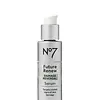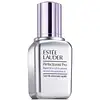What's inside
What's inside
 Key Ingredients
Key Ingredients

 Benefits
Benefits

 Concerns
Concerns

 Ingredients Side-by-side
Ingredients Side-by-side

Water
Skin ConditioningDimethicone
EmollientButylene Glycol
HumectantGlycerin
HumectantMethyl Gluceth-20
HumectantIsononyl Isononanoate
EmollientPolysilicone-11
Niacinamide
SmoothingPhenoxyethanol
PreservativeAcrylates/Beheneth-25 Methacrylate Copolymer
Tocopheryl Acetate
AntioxidantSilica
AbrasivePanthenol
Skin ConditioningPolysorbate 20
EmulsifyingCaprylyl Glycol
EmollientAmmonium Acryloyldimethyltaurate/Vp Copolymer
Potassium Hydroxide
BufferingXanthan Gum
EmulsifyingSodium Hyaluronate
HumectantHydrolyzed Rice Protein
Skin ConditioningDecyl Glucoside
CleansingPropylene Glycol
HumectantEthylhexylglycerin
Skin ConditioningAscorbyl Glucoside
AntioxidantPropanediol
SolventPentylene Glycol
Skin ConditioningTetrasodium EDTA
Hexylene Glycol
EmulsifyingT-Butyl Alcohol
PerfumingSodium Benzoate
MaskingMorus Alba Leaf Extract
Skin ConditioningPalmitoyl Tetrapeptide-94
Palmitoyl Tetrapeptide-95
Water, Dimethicone, Butylene Glycol, Glycerin, Methyl Gluceth-20, Isononyl Isononanoate, Polysilicone-11, Niacinamide, Phenoxyethanol, Acrylates/Beheneth-25 Methacrylate Copolymer, Tocopheryl Acetate, Silica, Panthenol, Polysorbate 20, Caprylyl Glycol, Ammonium Acryloyldimethyltaurate/Vp Copolymer, Potassium Hydroxide, Xanthan Gum, Sodium Hyaluronate, Hydrolyzed Rice Protein, Decyl Glucoside, Propylene Glycol, Ethylhexylglycerin, Ascorbyl Glucoside, Propanediol, Pentylene Glycol, Tetrasodium EDTA, Hexylene Glycol, T-Butyl Alcohol, Sodium Benzoate, Morus Alba Leaf Extract, Palmitoyl Tetrapeptide-94, Palmitoyl Tetrapeptide-95
Water
Skin ConditioningDimethicone
EmollientButylene Glycol
HumectantCaprylic/Capric Triglyceride
MaskingGlycerin
HumectantBis-PEG-18 Methyl Ether Dimethyl Silane
EmollientPolysorbate 20
EmulsifyingLauryl PEG-9 Polydimethylsiloxyethyl Dimethicone
Skin ConditioningPolysilicone-11
Mangifera Indica Seed Butter
Skin ConditioningPhoenix Dactylifera Fruit Extract
EmollientPisum Sativum Extract
Skin ConditioningCucumis Sativus Fruit Extract
EmollientCrithmum Maritimum Extract
Skin ConditioningLaminaria Ochroleuca Extract
Skin ConditioningCommiphora Mukul Resin Extract
Skin ConditioningTriticum Vulgare Germ Extract
Skin ConditioningBambusa Vulgaris Extract
Skin ConditioningChlorella Vulgaris Extract
Skin ConditioningLaminaria Saccharina Extract
Skin ProtectingBrassica Campestris Sterols
EmollientHelianthus Annuus Seed Extract
Skin ConditioningAlgae Extract
EmollientHypnea Musciformis Extract
Skin ProtectingSigesbeckia Orientalis Extract
Skin ConditioningNymphaea Alba Flower Extract
Skin ConditioningAcetyl Glucosamine
Skin ConditioningCaffeine
Skin ConditioningGelidiella Acerosa Extract
Skin ProtectingCoffea Arabica Seed Extract
MaskingSodium Hyaluronate
HumectantLactic Acid
BufferingPropylene Glycol Dicaprate
EmollientSaccharide Isomerate
HumectantMethyl Gluceth-20
HumectantEthylhexylglycerin
Skin ConditioningAcrylamide/Sodium Acryloyldimethyltaurate Copolymer
Emulsion StabilisingHelianthus Annuus Seedcake
AbrasiveCaprylyl Glycol
EmollientIsohexadecane
EmollientTocopheryl Acetate
AntioxidantAcrylates/C10-30 Alkyl Acrylate Crosspolymer
Emulsion StabilisingGlyceryl Polymethacrylate
Sodium Polyacrylate Starch
AbsorbentSqualane
EmollientSodium PCA
HumectantUrea
BufferingZea Mays Kernel Extract
Lactis Proteinum
Skin ConditioningPalmaria Palmata Extract
Skin ProtectingPolysorbate 80
EmulsifyingAcetyl Hexapeptide-8
HumectantTriolein
Skin ConditioningHydrolyzed Rice Extract
Skin ConditioningLinoleic Acid
CleansingTrehalose
HumectantGlycine Soja Protein
EmulsifyingGlucosamine Hcl
Phospholipids
Skin ConditioningLaminaria Digitata Extract
Skin ProtectingHordeum Vulgare Extract
EmollientPolyquaternium-51
Skin ConditioningPalmitoyl Hexapeptide-12
Skin ConditioningErgothioneine
AntioxidantAminopropyl Ascorbyl Phosphate
AntioxidantPEG-8
HumectantPhytosteryl Canola Glycerides
Skin ConditioningPentylene Glycol
Skin ConditioningOleic Acid
EmollientPalmitic Acid
EmollientXanthan Gum
EmulsifyingParfum
MaskingSodium Hydroxide
BufferingCitric Acid
BufferingSilica
AbrasiveCalcium Chloride
AstringentStearic Acid
CleansingDipropylene Glycol
HumectantSodium Palmitoyl Proline
Skin ConditioningDisodium EDTA
BHT
AntioxidantPotassium Sorbate
PreservativePhenoxyethanol
PreservativeMica
Cosmetic ColorantCI 77891
Cosmetic ColorantIron Oxides
Water, Dimethicone, Butylene Glycol, Caprylic/Capric Triglyceride, Glycerin, Bis-PEG-18 Methyl Ether Dimethyl Silane, Polysorbate 20, Lauryl PEG-9 Polydimethylsiloxyethyl Dimethicone, Polysilicone-11, Mangifera Indica Seed Butter, Phoenix Dactylifera Fruit Extract, Pisum Sativum Extract, Cucumis Sativus Fruit Extract, Crithmum Maritimum Extract, Laminaria Ochroleuca Extract, Commiphora Mukul Resin Extract, Triticum Vulgare Germ Extract, Bambusa Vulgaris Extract, Chlorella Vulgaris Extract, Laminaria Saccharina Extract, Brassica Campestris Sterols, Helianthus Annuus Seed Extract, Algae Extract, Hypnea Musciformis Extract, Sigesbeckia Orientalis Extract, Nymphaea Alba Flower Extract, Acetyl Glucosamine, Caffeine, Gelidiella Acerosa Extract, Coffea Arabica Seed Extract, Sodium Hyaluronate, Lactic Acid, Propylene Glycol Dicaprate, Saccharide Isomerate, Methyl Gluceth-20, Ethylhexylglycerin, Acrylamide/Sodium Acryloyldimethyltaurate Copolymer, Helianthus Annuus Seedcake, Caprylyl Glycol, Isohexadecane, Tocopheryl Acetate, Acrylates/C10-30 Alkyl Acrylate Crosspolymer, Glyceryl Polymethacrylate, Sodium Polyacrylate Starch, Squalane, Sodium PCA, Urea, Zea Mays Kernel Extract, Lactis Proteinum, Palmaria Palmata Extract, Polysorbate 80, Acetyl Hexapeptide-8, Triolein, Hydrolyzed Rice Extract, Linoleic Acid, Trehalose, Glycine Soja Protein, Glucosamine Hcl, Phospholipids, Laminaria Digitata Extract, Hordeum Vulgare Extract, Polyquaternium-51, Palmitoyl Hexapeptide-12, Ergothioneine, Aminopropyl Ascorbyl Phosphate, PEG-8, Phytosteryl Canola Glycerides, Pentylene Glycol, Oleic Acid, Palmitic Acid, Xanthan Gum, Parfum, Sodium Hydroxide, Citric Acid, Silica, Calcium Chloride, Stearic Acid, Dipropylene Glycol, Sodium Palmitoyl Proline, Disodium EDTA, BHT, Potassium Sorbate, Phenoxyethanol, Mica, CI 77891, Iron Oxides
 Reviews
Reviews

Ingredients Explained
These ingredients are found in both products.
Ingredients higher up in an ingredient list are typically present in a larger amount.
Butylene Glycol (or BG) is used within cosmetic products for a few different reasons:
Overall, Butylene Glycol is a safe and well-rounded ingredient that works well with other ingredients.
Though this ingredient works well with most skin types, some people with sensitive skin may experience a reaction such as allergic rashes, closed comedones, or itchiness.
Learn more about Butylene GlycolCaprylyl Glycol is a humectant and emollient, meaning it attracts and preserves moisture.
It is a common ingredient in many products, especially those designed to hydrate skin. The primary benefits are retaining moisture, skin softening, and promoting a healthy skin barrier.
Though Caprylyl Glycol is an alcohol derived from fatty acids, it is not the kind that can dry out skin.
This ingredient is also used as a preservative to extend the life of products. It has slight antimicrobial properties.
Learn more about Caprylyl GlycolDimethicone is a type of synthetic silicone created from natural materials such as quartz.
What it does:
Dimethicone comes in different viscosities:
Depending on the viscosity, dimethicone has different properties.
Ingredients lists don't always show which type is used, so we recommend reaching out to the brand if you have questions about the viscosity.
This ingredient is unlikely to cause irritation because it does not get absorbed into skin. However, people with silicone allergies should be careful about using this ingredient.
Note: Dimethicone may contribute to pilling. This is because it is not oil or water soluble, so pilling may occur when layered with products. When mixed with heavy oils in a formula, the outcome is also quite greasy.
Learn more about DimethiconeEthylhexylglycerin (we can't pronounce this either) is commonly used as a preservative and skin softener. It is derived from glyceryl.
You might see Ethylhexylglycerin often paired with other preservatives such as phenoxyethanol. Ethylhexylglycerin has been found to increase the effectiveness of these other preservatives.
Glycerin is already naturally found in your skin. It helps moisturize and protect your skin.
A study from 2016 found glycerin to be more effective as a humectant than AHAs and hyaluronic acid.
As a humectant, it helps the skin stay hydrated by pulling moisture to your skin. The low molecular weight of glycerin allows it to pull moisture into the deeper layers of your skin.
Hydrated skin improves your skin barrier; Your skin barrier helps protect against irritants and bacteria.
Glycerin has also been found to have antimicrobial and antiviral properties. Due to these properties, glycerin is often used in wound and burn treatments.
In cosmetics, glycerin is usually derived from plants such as soybean or palm. However, it can also be sourced from animals, such as tallow or animal fat.
This ingredient is organic, colorless, odorless, and non-toxic.
Glycerin is the name for this ingredient in American English. British English uses Glycerol/Glycerine.
Learn more about GlycerinMethyl Gluceth-20 is a humectant. Humectants help draw moisture from the air to your skin.
It is created by combining polyethylene glycol with glucose.
Pentylene glycol is typically used within a product to thicken it. It also adds a smooth, soft, and moisturizing feel to the product. It is naturally found in plants such as sugar beets.
The hydrophilic trait of Pentylene Glycol makes it a humectant. As a humectant, Pentylene Glycol helps draw moisture from the air to your skin. This can help keep your skin hydrated.
This property also makes Pentylene Glycol a great texture enhancer. It can also help thicken or stabilize a product.
Pentylene Glycol also acts as a mild preservative and helps to keep a product microbe-free.
Some people may experience mild eye and skin irritation from Pentylene Glycol. We always recommend speaking with a professional about using this ingredient in your routine.
Pentylene Glycol has a low molecular weight and is part of the 1,2-glycol family.
Learn more about Pentylene GlycolPhenoxyethanol is a preservative that has germicide, antimicrobial, and aromatic properties. Studies show that phenoxyethanol can prevent microbial growth. By itself, it has a scent that is similar to that of a rose.
It's often used in formulations along with Caprylyl Glycol to preserve the shelf life of products.
Polysilicone-11 is a film-forming silicone that creates a non-tacky and matte finish on the skin. It's commonly used to improve texture, absorb excess oil, and help active ingredients spread evenly.
Due to its "rubber-like" structure, it stays on the skin's surface instead of being absorbed. On the skin, it creates a flexible layer that enhances wearability and stability.
Polysorbate 20 is made by combining ethoxylation of sorbitan, ethylene oxide, and lauric acid. It is a mild cleansing agent, surfactant, and emulsifier.
As a surfactant, it helps collect dirt and oils for washing. Emulsifiers prevent oils and water from separating.
Polysorbate 20 also adds scent to a product. Since it is made using sorbitol, it has a sweet scent. Sorbitol can also be found in fruits such as apples and peaches.
The lauric acid used to create Polysorbate 20 is often derived from coconuts.
Polysorbate 20 may not be fungal acne safe.
Learn more about Polysorbate 20Silica, also known as silicon dioxide, is a naturally occurring mineral. It is used as a fine, spherical, and porous powder in cosmetics.
Though it has exfoliant properties, the function of silica varies depending on the product.
The unique structure of silica enhances the spreadability and adds smoothness, making it a great texture enhancer.
It is also used as an active carrier, emulsifier, and mattifier due to its ability to absorb excess oil.
In some products, tiny microneedles called spicules are made from silica or hydrolyzed sponge. When you rub them in, they lightly polish away dead skin layers and enhance the penetration of active ingredients.
Learn more about SilicaSodium Hyaluronate is hyaluronic acid's salt form. It is commonly derived from the sodium salt of hyaluronic acid.
Like hyaluronic acid, it is great at holding water and acts as a humectant. This makes it a great skin hydrating ingredient.
Sodium Hyaluronate is naturally occurring in our bodies and is mostly found in eye fluid and joints.
These are some other common types of Hyaluronic Acid:
Learn more about Sodium HyaluronateTocopheryl Acetate is AKA Vitamin E. It is an antioxidant and protects your skin from free radicals. Free radicals damage the skin by breaking down collagen.
One study found using Tocopheryl Acetate with Vitamin C decreased the number of sunburned cells.
Tocopheryl Acetate is commonly found in both skincare and dietary supplements.
Learn more about Tocopheryl AcetateWater. It's the most common cosmetic ingredient of all. You'll usually see it at the top of ingredient lists, meaning that it makes up the largest part of the product.
So why is it so popular? Water most often acts as a solvent - this means that it helps dissolve other ingredients into the formulation.
You'll also recognize water as that liquid we all need to stay alive. If you see this, drink a glass of water. Stay hydrated!
Learn more about WaterXanthan gum is used as a stabilizer and thickener within cosmetic products. It helps give products a sticky, thick feeling - preventing them from being too runny.
On the technical side of things, xanthan gum is a polysaccharide - a combination consisting of multiple sugar molecules bonded together.
Xanthan gum is a pretty common and great ingredient. It is a natural, non-toxic, non-irritating ingredient that is also commonly used in food products.
Learn more about Xanthan Gum